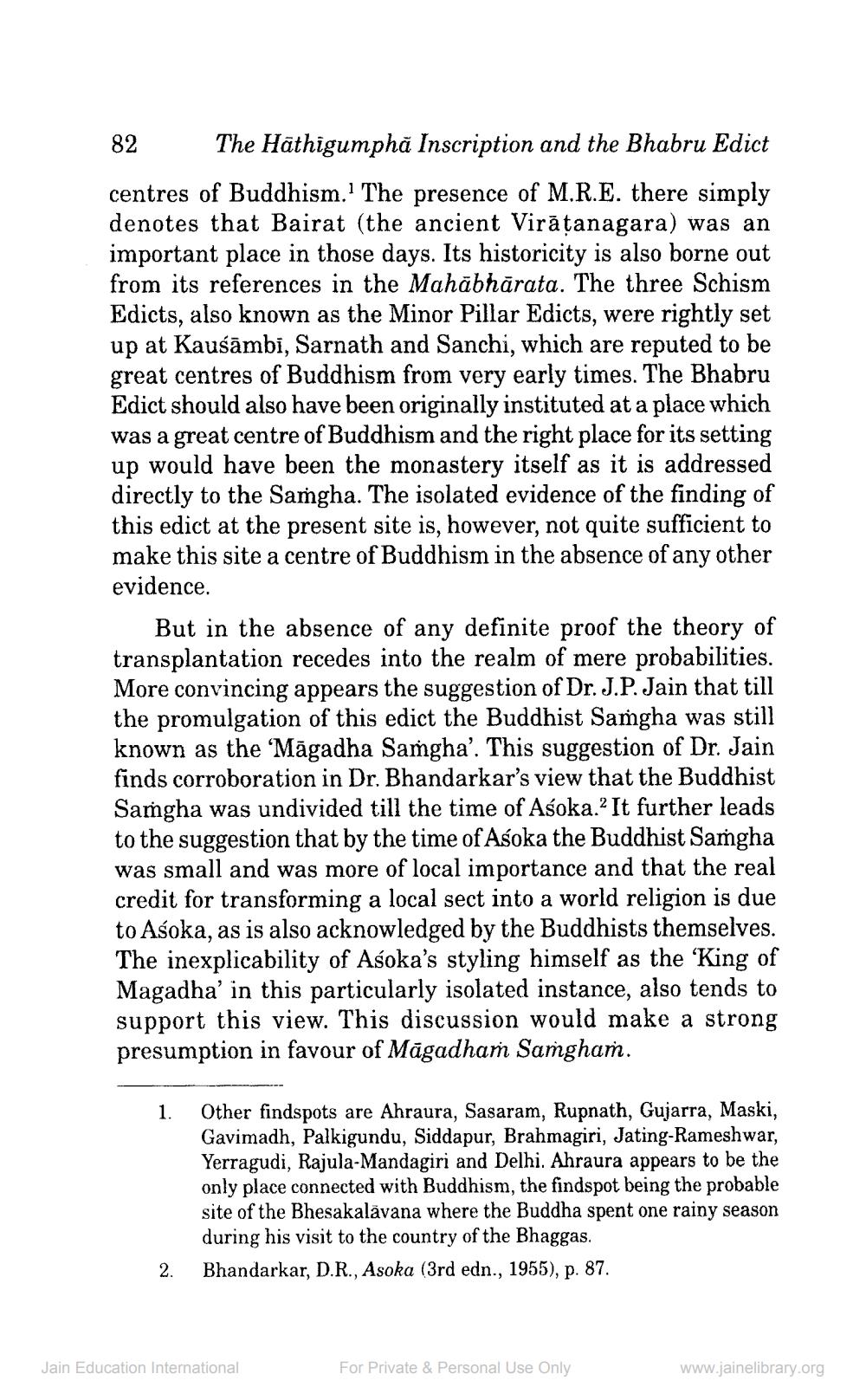________________
82 The Häthigumphả Inscription and the Bhabru Edict centres of Buddhism. The presence of M.R.E. there simply denotes that Bairat (the ancient Virățanagara) was an important place in those days. Its historicity is also borne out from its references in the Mahābhārata. The three Schism Edicts, also known as the Minor Pillar Edicts, were rightly set up at Kausāmbi, Sarnath and Sanchi, which are reputed to be great centres of Buddhism from very early times. The Bhabru Edict should also have been originally instituted at a place which was a great centre of Buddhism and the right place for its setting up would have been the monastery itself as it is addressed directly to the Samgha. The isolated evidence of the finding of this edict at the present site is, however, not quite sufficient to make this site a centre of Buddhism in the absence of any other evidence.
But in the absence of any definite proof the theory of transplantation recedes into the realm of mere probabilities. More convincing appears the suggestion of Dr. J.P. Jain that till the promulgation of this edict the Buddhist Samgha was still known as the “Māgadha Samgha’This suggestion of Dr. Jain finds corroboration in Dr. Bhandarkar's view that the Buddhist Samgha was undivided till the time of Asoka.? It further leads to the suggestion that by the time of Asoka the Buddhist Saṁgha was small and was more of local importance and that the real credit for transforming a local sect into a world religion is due to Asoka, as is also acknowledged by the Buddhists themselves. The inexplicability of Asoka's styling himself as the 'King of Magadha' in this particularly isolated instance, also tends to support this view. This discussion would make a strong presumption in favour of Māgadham Samgham.
1.
Other findspots are Ahraura, Sasaram, Rupnath, Gujarra, Maski, Gavimadh, Palkigundu, Siddapur, Brahmagiri, Jating-Rameshwar, Yerragudi, Rajula-Mandagiri and Delhi. Ahraura appears to be the only place connected with Buddhism, the findspot being the probable site of the Bhesakalăvana where the Buddha spent one rainy season during his visit to the country of the Bhaggas. Bhandarkar, D.R., Asoka (3rd edn., 1955), p. 87.
2.
Jain Education International
For Private & Personal Use Only
www.jainelibrary.org




